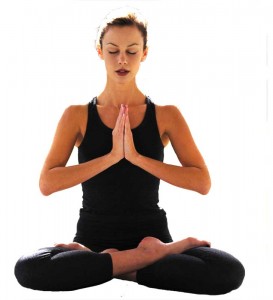Hatha yoga works and heals the body
Anything in excess can be dangerous in the long run — even working out. Though exercise keeps your body strong and fit, continuous stress on your frame can result in physical problems you might not notice.
This recently happened to me; I was beginning to feel sore from my regular routine. A friend recommended yoga to help rejuvenate my muscles and joints. So last week I tried hatha yoga, a combination of specific stretches and positions, along with breathing exercises, designed to hone the physical and mental aspects of the body.
I’m open-minded to many physical activities, but I went into my yoga class expecting to work on balance, not to get a real workout or to solve my aches and pains.
I was wrong.
Many yoga movements emphasize balancing the body to stretch out every muscle. At first, the concept that holding stationary poses can be exercise seems paradoxical, but it worked better than I expected.
Yoga’s relief elements are particularly wonderful. Strength-training is effective for building muscle, but even with good form and pacing, too much training can lead to tight spots in the body and stiffness in the joints.
I was surprised more than anything to find — once in a pose for instance that required me to stand on one leg and make the rest of my body parallel to the ground — just how sore my back was. I thought my strength exercises had been harmless, but their detriments had snuck up on me, leaving me with more than a few stiff spots in my muscles. It was only through trying yoga that I realized how much harm weight training can do.
Yoga, however, isn’t just a way to heal the body; it’s a great way to relax and ease the mind. If done correctly, yoga can be a wonderful way to deal with the stresses of college life. I was surprised to find the classes I took were filled with businessmen doing yoga on their lunch breaks to supplement their health and fitness routines.
The slow tempo and attention to creating strong, continuous breathing routines make yoga a great way to step back from a busy schedule and rest. Though yoga isn’t exactly the same as a vacation filled with decadent catnaps, it can be implemented as an effective stress reliever.
The yoga class I took provided a strenuous workout — just not in the conventional sense of presses and curls. The constant stretches and balancing use bodyweight to test the muscles involved.
One particular routine involved turning to one side and bending the knees to sit in a squat-like pose, while keeping the hips squared. The position wasn’t that difficult at first, but when I had to hold it for a minute, it became a test of physical strength and stamina.
In the end, the benefits of doing yoga were obvious. My body wasn’t sore; it felt relaxed and my joints were no longer stiff. Practitioners say habitual yoga not only helps prevent those pains from returning but makes the body flexible and adaptive to the rigors of other, more physical exercises — running, sports and even strength-training.
One tip: Avoid weights for about three days after your first time doing yoga. Yoga is effective for relieving aches, but I found my body’s muscles were weak and still recovering. Take a few days off, enjoy the relaxation and don’t be foolish like I was, trying to do squats the next day.
Hatha yoga isn’t the ultimate key to healthy living, but it’s one of the best tools to keep long-term injuries at bay. And even if you aren’t suffering from aches and pains, yoga can provide a way to de-stress your schedule. Practicing yoga is a great way to maintain a healthy fitness routine and deal with an exhausting college lifestyle.
Nicholas Slayton is a junior majoring in print and digital journalism. His column “Way of the Body” runs Tuesdays.

YOU’LL NEED TO BE FLEXIBLE WHEN I’M SNAPPING YOU IN HALF WITH THESE GUNS!
I RULE. GUNS UP!